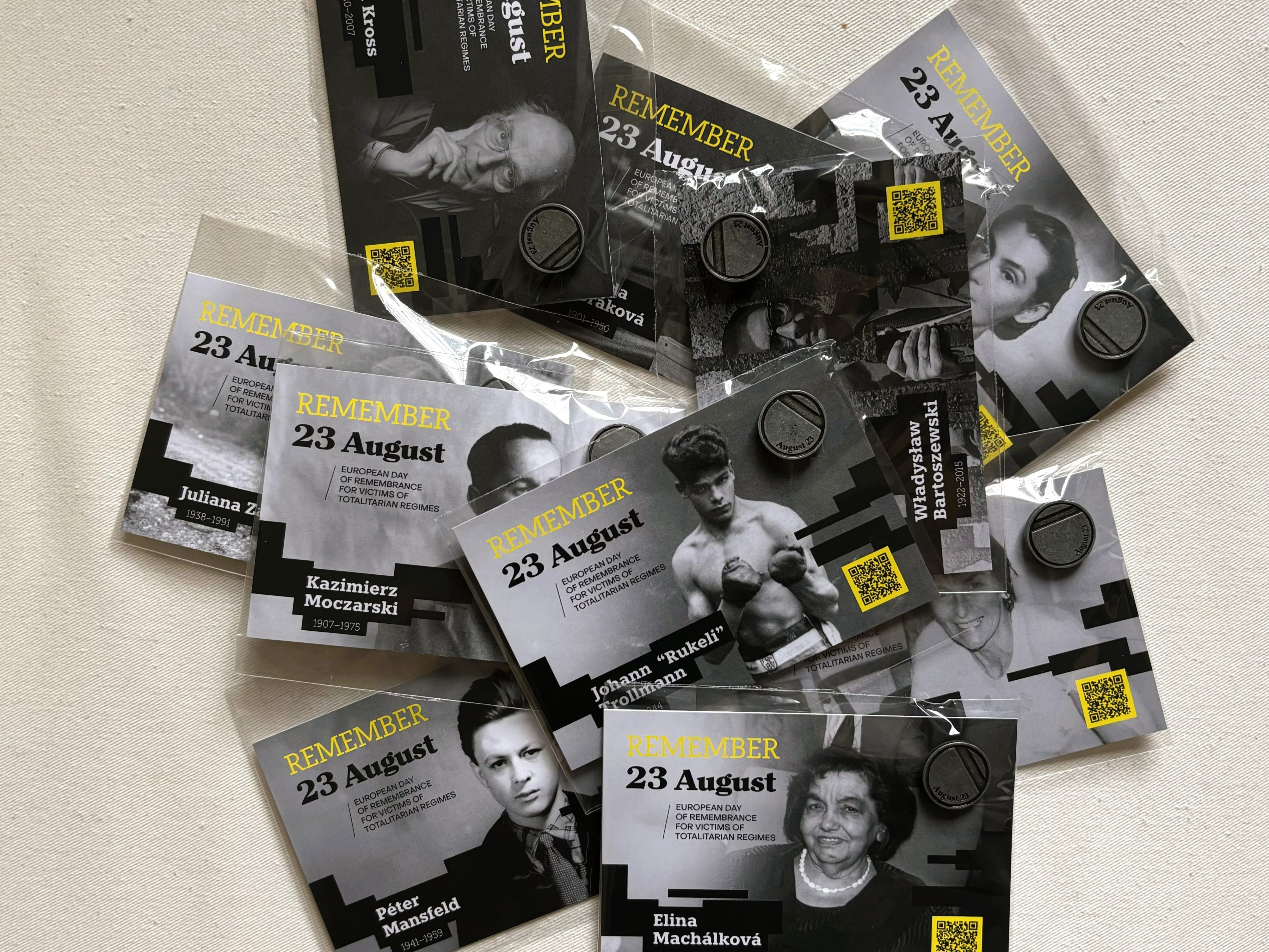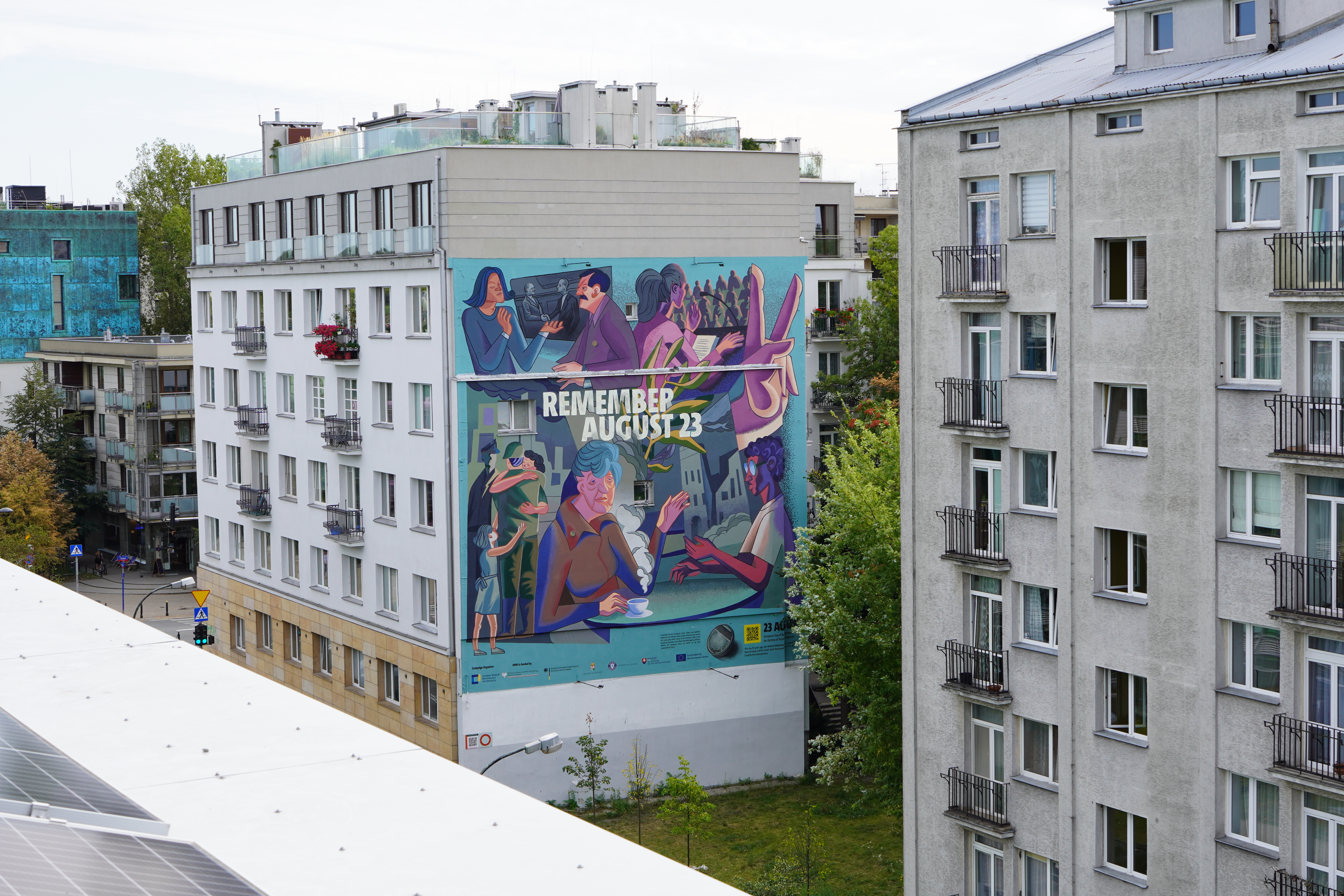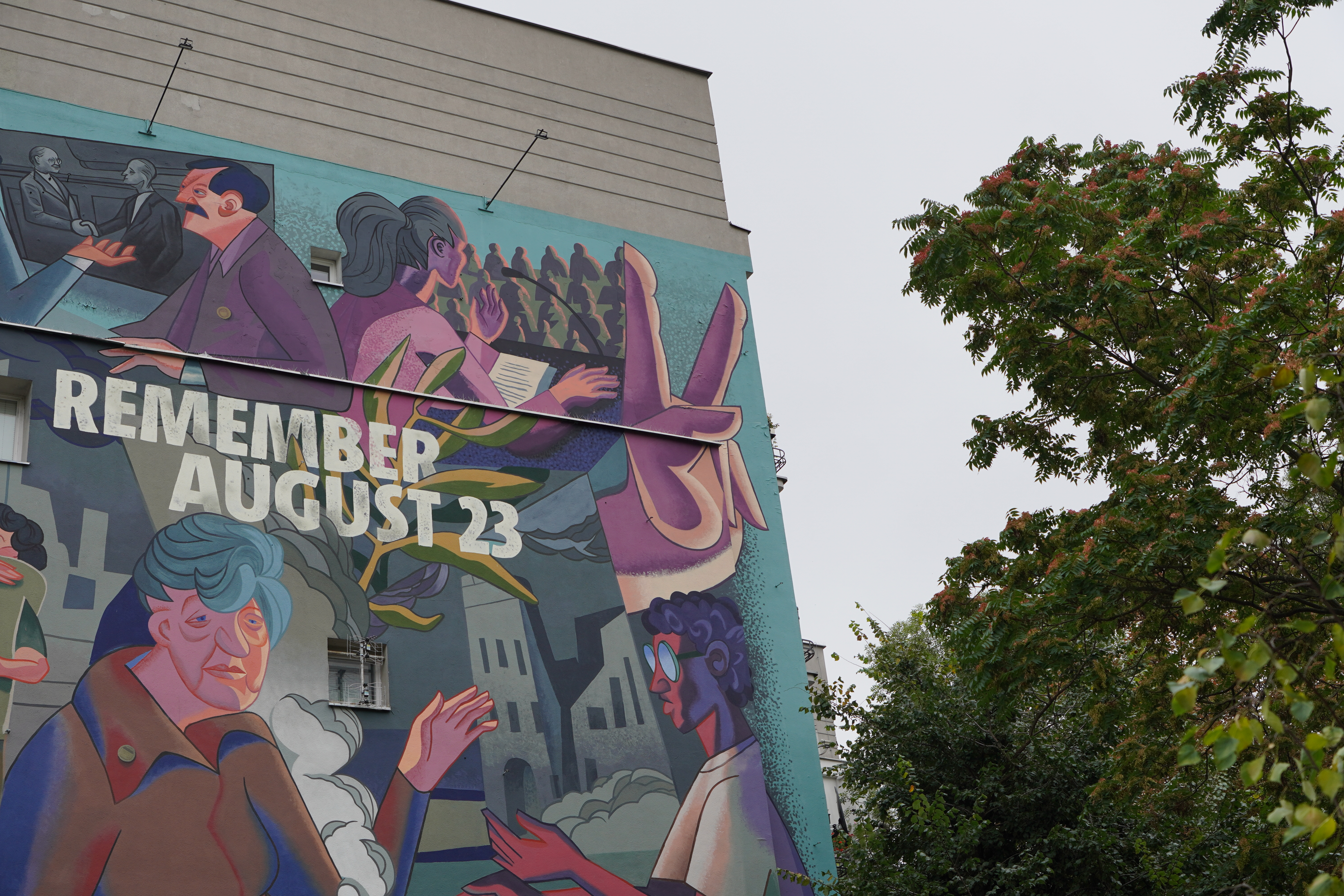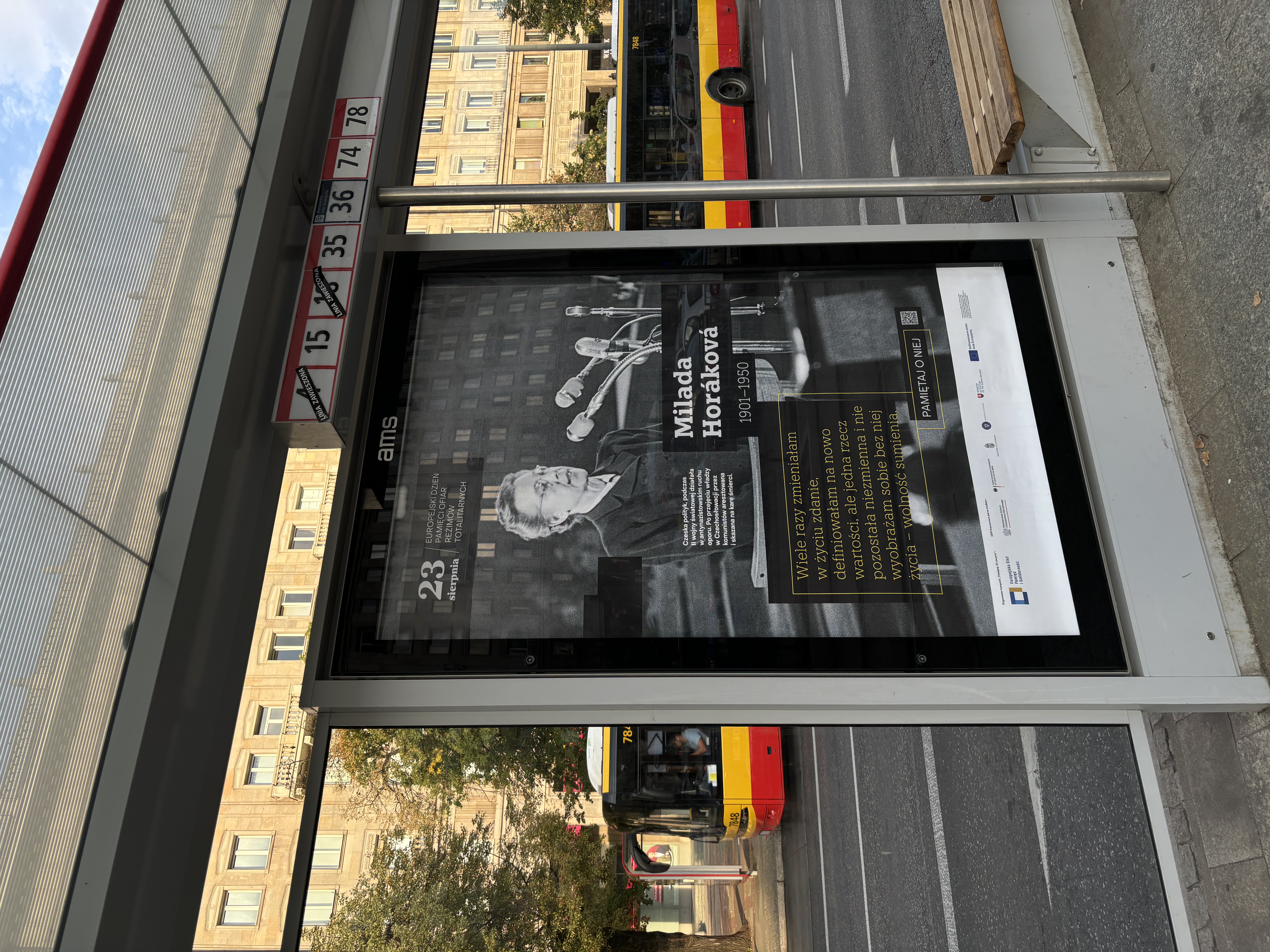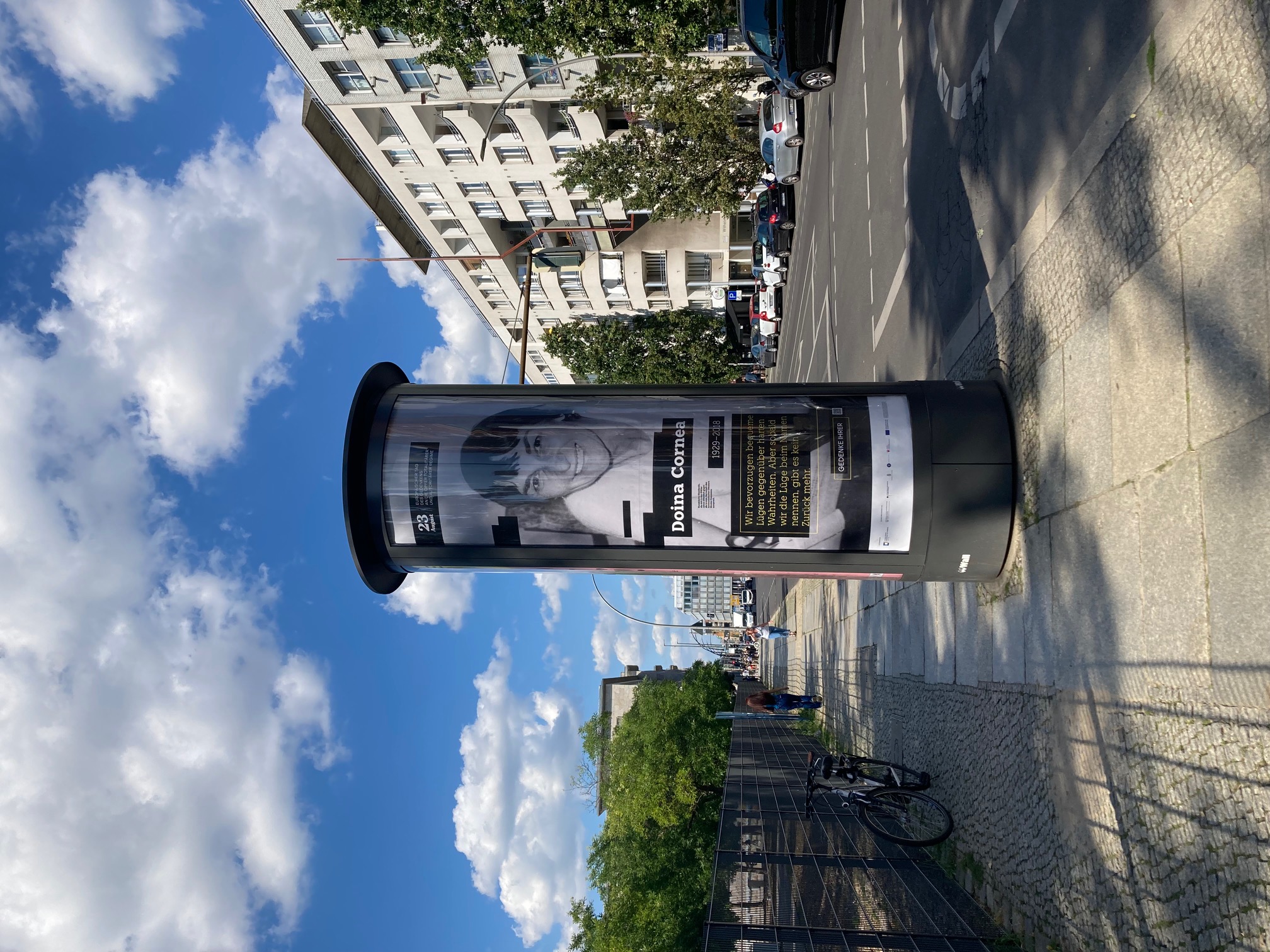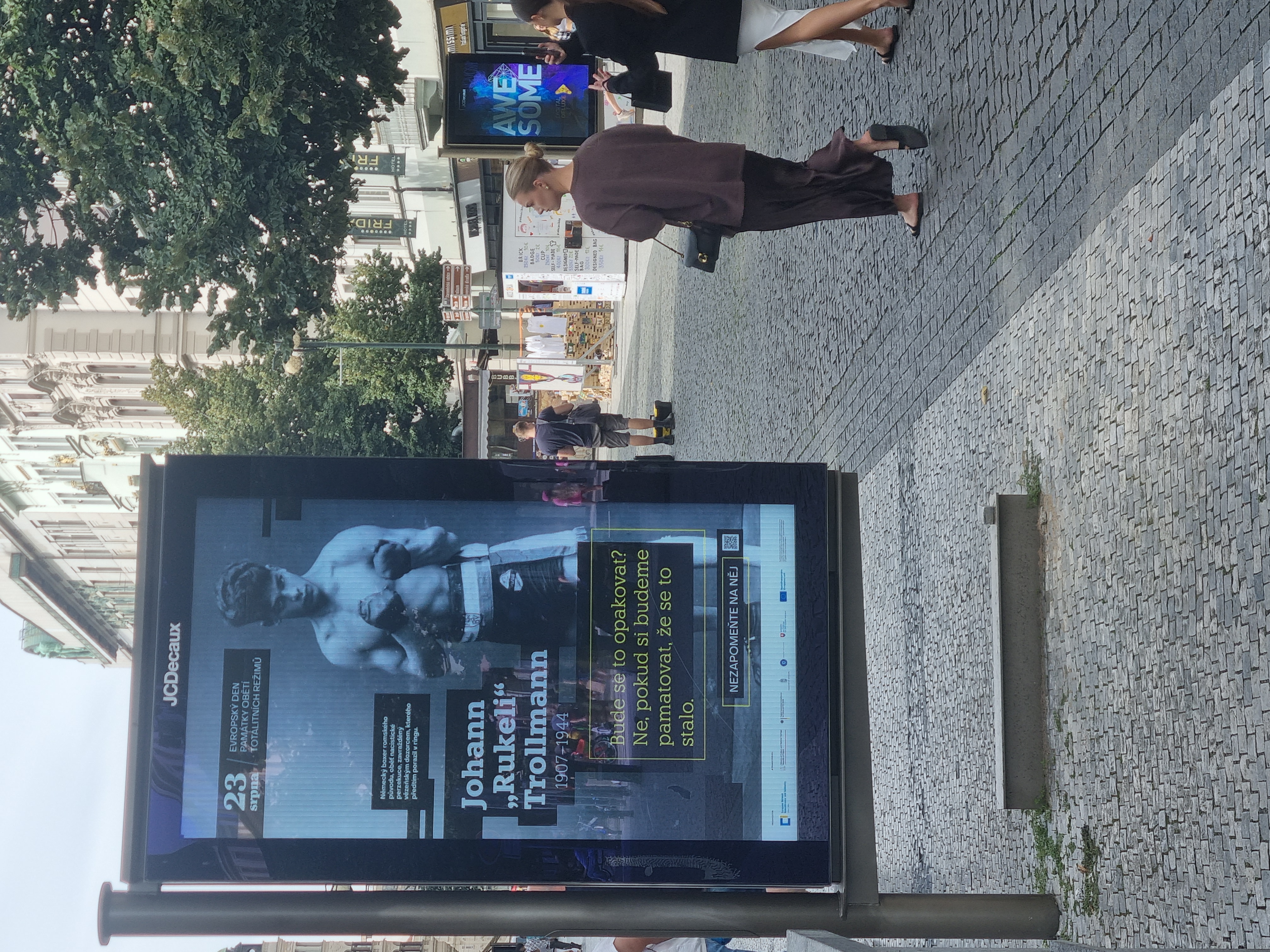Every year since 2013, the ENRS has marked the European Day of Remembrance for the Victims of Totalitarian Regimes on the anniversary of the signing of the Molotov-Ribbentrop Pact on August 23, 1939. What is the meaning of a commemorative pin and the media campaign “Remember. August 23”? What makes this date so significant? Agnieszka Mazur-Olczak explains its importance in European history and in our calendar.
The European Day of Remembrance for Victims of Totalitarian Regimes was first commemorated on 23 August 2011 in Warsaw, under the auspices of the Polish Presidency. During this event, the Warsaw Declaration was signed, in which the signatories emphasised the importance of maintaining the memory of the criminal consequences of totalitarian regimes in the consciousness of Europeans and called on the EU to support, research, and collect documentation related to the crimes committed by these regimes.
The Warsaw Declaration was signed a year after the ENRS was founded. In 2013, our organisation first conceived the idea of how to commemorate August 23. We decided to create a pin that would serve as a symbol of remembrance for the victims of totalitarianism.
Why is the ENRS so committed to spreading awareness about this date?
Our core mission is to foster a shared memory of the difficult history of the 20th century. These two regimes significantly marked that history, which is why, from the very beginning, the ENRS recognised that August 23 is an important day for us and that we should be strongly involved in its commemoration. We have always been aware that this date is not deeply rooted in the memory of Western Europeans, as they were not as severely affected by the communist regime. As a result, August 23 is not a date that the West associates with the outbreak of the Second World War. However, it is impossible to talk about the Second World War without mentioning August 23, because it was the Molotov-Ribbentrop Pact that paved the way for these totalitarian regimes. It allowed them to temporarily suspend military actions against each other while simultaneously enabling them to wreak destruction on the territories they divided between themselves.
What is the 'Remember. August 23' campaign about?
When the project was launched in 2013, our colleagues developed an idea of a pin and an informative note. The design of the pin refers to International Black Ribbon Day, which has been observed since 1986. The note explains what this date symbolises and why it is so significant in the history of Europe, and even the world. The note from 2013 featured a collage of images of selected victims from both totalitarian regimes, which we obtained from archives. Over the years, we have modified the design of the card. The next edition had an educational dimension, presenting a map that showed the spread of both totalitarian regimes across Europe, following the division line established by the Molotov–Ribbentrop Pact. This map became the main motif of our project for several years. Based on it, we created a short animation where red and black colours sweep across Europe. This simple graphic trick perfectly illustrated what happened at that time, which is why the animation is still frequently used by the media and shown at conferences commemorating August 23. This year, we diversified our notes by creating twelve versions featuring the heroes of our spots, along with QR codes that lead to our website where people can watch their related stories.
Because we wanted the campaign to become more media-friendly, in 2018, we came up with the idea of creating a series of short films. We collaborated with producer Piotr Kornobis, and this led to the first two scripts telling the stories of Mala and Edek – lovers from Auschwitz – and Peter Mansfeld, the youngest victim of the 1956 uprising in Hungary. These films were very well received by our social media audience. We also managed to air them on several European television programmes. Their success showed us that it was worth continuing the series. We also saw potential in the fact that the European Network is based on partnerships from different countries. We believed that by showcasing the profiles of dissidents from various nationalities, we could collectively commemorate this date, and our partners indeed became very engaged in promoting their stories.
For several years now, we have been sending our pins to various institutions across Europe so that on this day, the public visiting museums and memorial sites can wear the pin as a sign of solidarity with the victims and as a mark of respect for those individuals. Thanks to our media efforts, August 23 has become so recognisable that now institutions are writing to us asking for pins and inquiring whether we have produced a new spot.
What message do the characters featured in the spots want to convey to us?
I think all these films tell us that resistance makes sense. They all tell us that every totalitarian regime, regardless of when it arises, will eventually be overthrown. Each of our characters is different, each story is told differently, but they all share one common denominator: each character has become a symbol of resistance in their country.
The strength of this campaign lies in its diversity. Sometimes the hero speaks to us in the first person. Sometimes their story is told by their mother. Sometimes it’s a letter, as in the case of the film about Milada Horáková, where the narrator reads a letter she wrote to her then fifteen-year-old daughter the day before her execution. Her daughter was only able to read it forty years later.
If you watch these films and you’re a mother, you can identify with the spot about Mansfeld or Milada Horáková. If you are in love and want to focus only on the pleasant things in your life, then the stories of people who couldn’t experience their love in freedom and joy because they were surrounded by a dark world will resonate with you. If you enjoy literature and watch the spot about Jan Kroos, you’ll think about how, for centuries, every totalitarian regime has burned books that were dangerous to them. Everyone, regardless of their country, can find a character in these stories that will touch them and make them want to learn more about them, to understand how and why their fate unfolded the way it did.
The heroes of these films are often people who survived one totalitarian regime during the Second World War, only to be thrown into another by history because they ended up on the wrong side of the Iron Curtain. For instance, the story of Boris Romanchenko resonates most strongly with me. He survived the Second World War and was a prisoner in concentration camps, later living in Ukraine, which was dependent on the Soviet Union, and in 2022 he was killed by a bomb dropped on Putin’s orders. These heroes have qualities that deeply resonate with us.
This year, representatives of the Roma community from Germany and the Czech Republic were added to the gallery of characters. What determined this choice?
In 2015, the European Parliament designated August 2 as the Roma Holocaust Memorial Day. The Roma are a social group that also suffered greatly during the Second World War, and who still face exclusion and discrimination today. When we were searching for Roma heroes, we found that there are very few photographs of them and that their stories are poorly documented because people are not very interested in this topic. We decided it would be good to give them a voice too and to show that, in addition to typical national groups, there is also a community that lives in various countries. We all interact with them, but we are unaware of the tragedy they experienced during the Second World War. This year, we are working on two spots that will premiere in a few days. One of this year's featured figures is Johann Trollmann, a boxer. During the recent Olympics in Paris, we were captivated by the athletes' performances and admired the results of their hard work. Trollmann was also an athlete. What’s more, before the outbreak of the Second World War, he was a huge star in Germany, which ultimately led to his death. We believe it is worth telling this story. In the film, we present a picture of a wonderful young rebel who could have provided many people with the sporting excitement that we all enjoy, admire, and follow. However, Trollmann had to die simply because he was of the wrong race. This is something we should remind people of, because we cannot divide people into those of the right race and those who are not.
Why do we need this campaign? Why now? Why specifically on August 23?
I think that in recent years, there has been a lot of disinformation in the public sphere regarding historical facts. We have seen this recently in speeches at the UN or in Putin’s addresses. I believe that reminding people today of what August 23 represents is to show that this contemporary dictator is moving towards the division of Europe almost along the same line that was drawn in the 1939 pact. Today, it is extremely important to know these heroes and their stories, to remind people that there were individuals who opposed the regime. A short 30-second film cannot tell us the whole story, but it can inspire us to seek out more information and delve into historical facts.
Today, in an age of disinformation and at the same time information overload, we want to use our films to bring a story closer to people and provoke the viewer to read more about it. The biographies of these characters can be found on our website and under each film on our YouTube channel. The most important thing is to understand the historical context. These times are not so distant that they couldn’t return. The truth is, we never know when this Pandora's box might be opened again.

